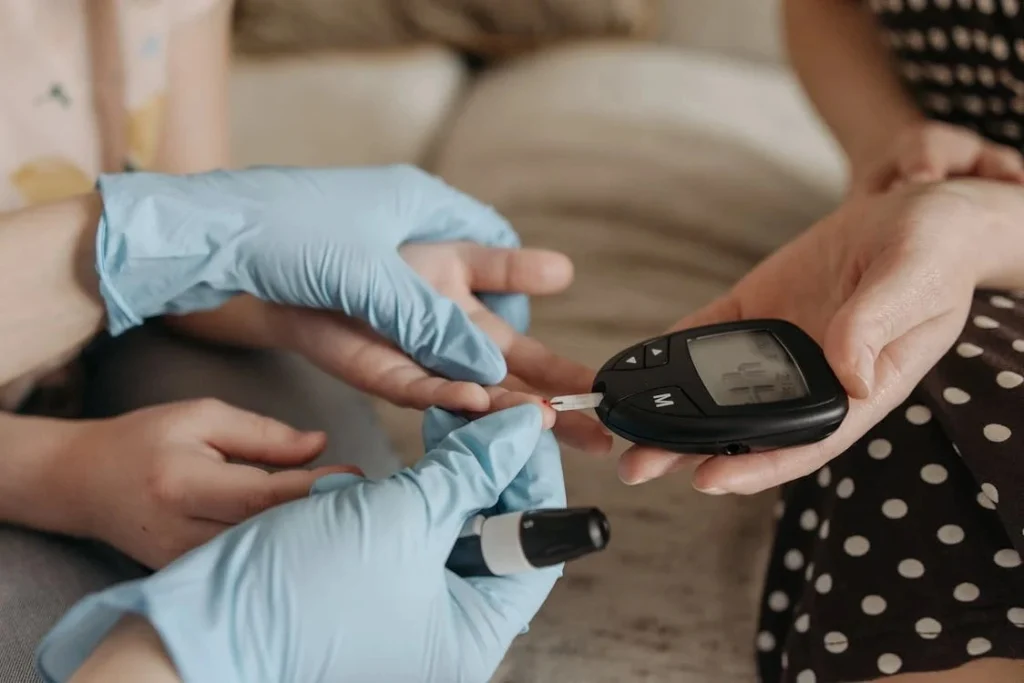Confused about why your blood sugar spike after exercise? Learn the science behind post-exercise glucose changes and how to manage it effectively for better diabetes control.
You lace up your sneakers, hit the gym, do your workout and then check your blood sugar, expecting it to drop. But surprisingly, it’s gone up instead. If you’re living with diabetes, this can feel annoying and confusing. You might be thinking, “I did everything right. So why does my blood sugar spike after Exercise?”
You are not alone. People with both Type 1 and Type 2 diabetes experience temporary blood sugar spike after working out, especially after high intensity workouts. While it might seem like a setback, there is actually a logical explanation and even better, there are ways to control it without giving up your fitness goals.
Understanding Blood Sugar and Exercise
Workouts are usually said as one of the best ways to lower blood sugar, so when you see a rise in your glucose level, it can feel like something is wrong. But here’s the deal: not all workouts affect blood sugar the same way.
- Aerobic exercises like walking, cycling, and swimming usually lower blood glucose.
- Anaerobic exercises such as weightlifting, sprinting, or high-intensity interval training (HIIT) can cause temporary spikes in blood sugar.
- The key lies in how your body reacts to physical stress and the type of fuel it uses to get through the workout.
4 Reasons Why Blood Sugar Spikes After Working Out
1. Stress Hormones Kick In (Adrenaline and Cortisol)
During intense workouts, your body produces stress hormones, including cortisol and adrenaline. These hormones prepare your body for action, increasing your heart rate and mobilizing energy sources.
To provide quick energy, your body signals the liver to release stored glucose into your bloodstream. This causes your blood sugar to rise even if you didn’t eat anything before your workout.

2. The Liver Releases Glucose for Energy
Your liver acts like a backup generator. When your muscles demand more fuel during exercise, the liver breaks down glycogen (stored sugar) and dumps it into your bloodstream. This is common during short bursts of intense activity like sprinting or heavy lifting.
For people with diabetes, this process may overshoot, leading to a visible post-exercise spike.
3. Temporary Insulin Resistance
Right after intense workouts, your muscle cells can resist insulin for some time, which means sugar in your blood has a harder time entering those cells. This effect is short term, but it can cause blood sugar spike after exercise for few hours.
But not to worry, it’s just your body recovering and rebalancing.
4. Pre-Workout Meals or Snacks
If you have eaten a carb-heavy snack or meal before working out, your blood sugar may naturally rise especially if you begin exercising too soon after eating your snack. Your body is still digesting and absorbing those carbs, and the added stress of a workout may increase the spike.
What Type of Exercise Causes This?
Not all workouts have the same impact:
- High-intensity workouts (HIIT, sprinting, CrossFit) are more likely to cause spikes.
- Resistance training (like lifting weights) can also lead to short-term glucose increases.
- Cardio or moderate aerobic activity (like walking, jogging, dancing) usually lowers blood sugar.
Tip: If you notice a pattern of blood sugar spikes after specific workouts, consider adjusting your intensity, duration, or timing.
How to Prevent or Manage Post-Workout Spikes
If you’re wondering how to stop or reduce those post-workout spikes, here are a few smart strategies:
1. Track Your Patterns
Use a continuous glucose monitor (CGM) or check your blood sugar before, during, and after exercise. This helps you see exactly how your body reacts to different workouts.
2. Walk It Out
A light 10–15 minute walk after an intense workout can help lower glucose levels by improving insulin sensitivity and helping muscles absorb sugar more efficiently.
3. Be Smart with Pre-Workout Fuel
Try eating a balanced snack that includes protein, fiber, and slow-digesting carbs 60–90 minutes before working out. Avoid high-sugar snacks right before exercise unless you feel your sugar level is going down.

4. Adjust Insulin (If You Use It)
If you use insulin, speak with your healthcare provider about possibly adjusting your pre- or post-workout doses. But don’t make changes on your own getting professional guidance is key.
When Should You Worry?
- A temporary blood sugar spike after exercise is usually nothing to panic about. But if:
- Your blood sugar stays spiked up hours after exercise
- You experience symptoms like nausea, blurred vision, or confusion
- You regularly see your numbers above 250 mg/dL post-exercise
it’s a good idea to consult your endocrinologist or diabetes educator.
Conclusion
So, why does your blood sugar spike after exercise? Because your body is complex and working hard to fuel your muscles, manage stress, and recover. It’s a temporary reaction not a sign you are doing anything wrong.
The most important takeaway? Don’t let a post exercise spike demotivate you. The long term benefits of movement better insulin sensitivity, heart health, energy, and mood are absolutely worth it.
Keep moving, stay focused, and trust that with the right strategies, you can manage your blood sugar like a pro.
FAQs
Q1: Is it bad if my blood sugar goes up after a workout?
No, it’s not necessarily bad. It’s often a temporary response to intense activity and stress hormones. Monitor and manage, but don’t stop exercising.
Q2: Should I adjust my insulin if I notice post-workout spikes?
Possibly, but only under your doctor’s guidance. Never make insulin changes without professional advice.
Q3: What’s the best type of workout to avoid blood sugar spikes?
Moderate aerobic exercise like walking, cycling, or swimming is less likely to cause spikes and is great for blood sugar control.
